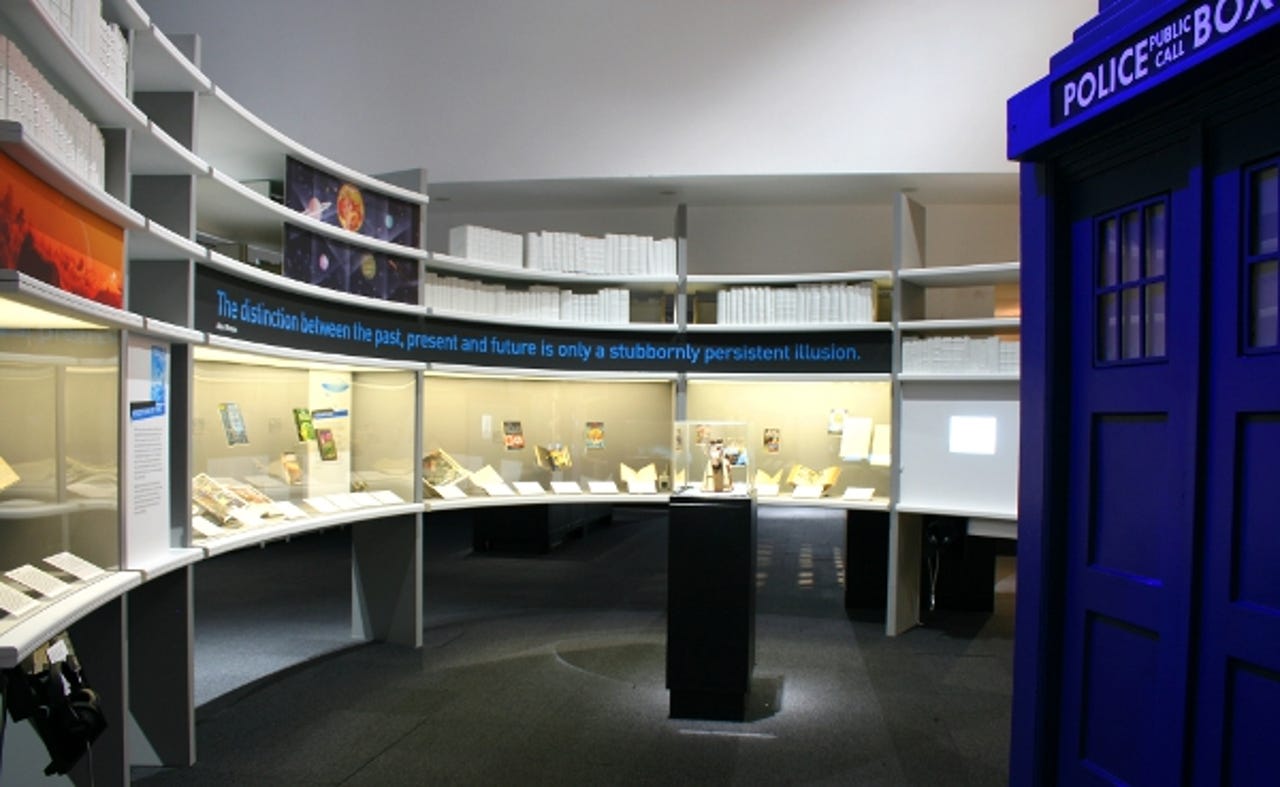Photos: A history of the future - science fiction through the ages at the British Library


Out of this World at the British Library
From the second century to the end of time, the British Library's 'Out of this World' exhibition...
Science fiction has used technology for plenty of raw material over the last few decades, whether it's killer AIs in 2001 or the 'consensual hallucination' of cyberspace. Equally, the IT industry has long taken its cues from sci-fi: author Arthur C Clarke was one of the first to suggest geostationary satellites could be used for communications.
'Out of this World' is the British Library's first exhibition to explore science fiction through literature, film, illustration and sound, and displays gems of the library's collections, from the earliest science-fiction manuscripts to recent bestsellers.
Pictured above is a view of the exhibition, with a replica Tardis on the right. The exhibition also features a small steampunk K9.
Out of this World at the British Library
The exhibition traces different themes explored through science fiction as a series of worlds: alien worlds, future worlds, parallel worlds, virtual worlds, the end of the world - posing questions to reveal different takes on science, politics, society and the future.
Above is Sleepy the robot, who gives visitors to the exhibition more information about well-known science-fiction characters.
Out of this World at the British Library
Highlights of the exhibition include a 1647 edition of Lucian's True History.
The story was written in the second century AD, and depicts a group of adventurers setting out on a sea voyage. They visit a number of fantastical lands and, lifted up by a giant waterspout, are deposited on the Moon. Lucian's True History is considered the first known science-fiction text.
In the background here you can see a rather large tripod alien.
Out of this World at the British Library
Also featured is HG Wells' The War of the Worlds, one of the earliest stories that details a conflict between mankind and an alien race - as depicted above in an illustration by Henrique Alvim Correa in the 1906 Belgian edition of the novel.
Out of this World at the British Library
According to Andy Sawyer, director of science-fiction studies MA at the University of Liverpool and guest curator of the exhibition, our interest in science fiction is a sign of our curiosity about our world.
"There is no doubt that science fiction has split literary experts for decades and remains a source of debate and discussion across the world. What this exhibition shows is that science fiction is a way of asking questions about the world, its future, and our place in it that has roots in a number of literary traditions and cultures," he said in a statement.
Out of this World at the British Library
Katya Rogatchevskaia, British Library co-curator of 'Out of this World', said the exhibition aims to show that science fiction provides a window on the world and society in which we live today.
Pictured above is an illustration from the 1638 first edition of Francis Godwin's The Man in the Moone, in which the supposed author Domingo Gonsales - Godwin's pen name - reveals that all that is needed to escape the magnetic pull of the earth, and so journey to the moon, is a trained flock of birds known as ganzas.
Out of this World at the British Library
If you want to visit the free exhibition, it is in the Paccar Gallery at the British Library, but you'll have to hurry - it closes on 25 September.
Above is the cover of Enrique Gaspar's 1887 novel El Anacronópete depicting the earliest known portrayal of a time machine.